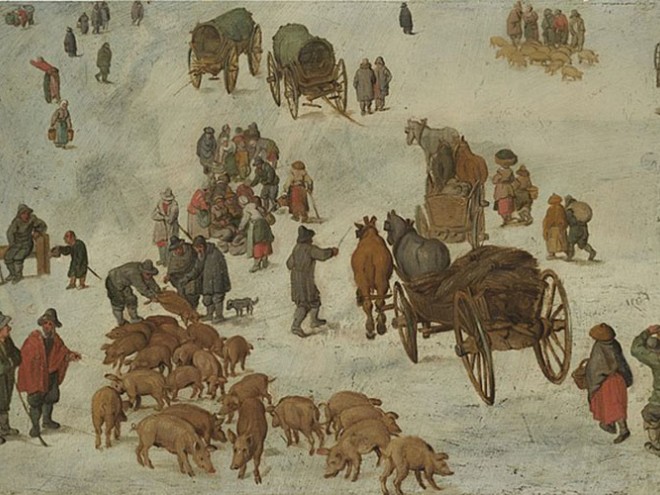For many Jews, the pig is not a formative part of Jewish identity. Yet according to Jordan D. Rosenblum, it is precisely the pig’s absence that makes it an integral part of Jewish history and identity. In his book Forbidden, Rosenblum explores the sometimes violent, sometimes hilarious relationship between Jews and the pig over the centuries.
While the pig has humble beginnings in the Hebrew Bible, it has emerged over time as the forbidden food. Literature dating back to the Second Temple period suggests that pigs were weaponized by the Greeks against the Jews to quell resistance, thus igniting stories of Jewish martyrdom, heroic resistance, and porcine euphemisms — stories that would reverberate for centuries to come.
The pig turned into a symbol of Judaism’s vices in the face of persecution instigated by Rome. Throughout the Middle Ages, and culminating with the Spanish Inquisition, Christian rulers and believers often associated Jews with pigs, leading to mockery, degradation, and, in the worst case, murder. Even changing sides and eating pork did not help: disparagingly referred to as Marranos (Spanish for “pigs”), Jewish converts to Christianity couldn’t escape the pig, neither in Christian Spain nor in other countries.
In the early modern period, Jews are described as using the symbol and literal flesh of the pig to counter Christians or to strengthen their connection to God through ritual inversion, as evidenced by Shakespeare’s The Merchant of Venice and the legends surrounding the transgressive Sabbatean and Frankist movements. However, these are rare examples in the move toward emancipation, which, in most cases, demanded that Jews abandon their traditions — including their reservations about pork — to be granted political and economic rights. This escalated with Communism and Nazism, ideologies that sought to eradicate Jewish culture and Jewish lives through the use of age-old stereotypes.
It appears that throughout the centuries, Jews have asserted agency over the pig (and thus over pressures to conform to non-Jewish standards), but only in the wake of modernity did Jews fully gain power over it. Rosenblum also explores twentieth- and twenty-first-century pop-cultural references related to the pig, such as Hebrew Union College’s “Trefa Banquet” in 1883.
Rosenblum’s explanations are academic yet entertaining and easy to follow. His book is organized chronologically, illustrating the complex stage on which Jewish – porcine relations have unfolded. Along the way, Rosenblum not only adds the occasional pig pun, but he also clarifies the many cultural and religious connotations that have come to be associated with Jews, Jewish dietary laws, and pigs. Using a wealth of sources, he invites readers to delve deep into the Jewish cultural significance of the swine over time.
Katharina Hadassah Wendl (Klein) is a researcher in rabbinic literature at Freie Universität Berlin.





